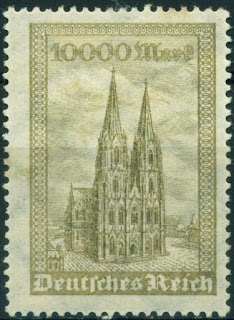Here are some events that happened on August 14th. It could be an event or a person that died or was born on that day
1777 Born: Hans Christian Ørsted, Danish physicist and chemist (d. 1851)
Hans Christian Ørsted (often rendered Oersted in English; 14 August 1777 – 9 March 1851) was a Danish physicist and chemist who discovered that electric currents create magnetic fields, which was the first connection found between electricity and magnetism. Oersted's law and the oersted (Oe) are named after him.
On 21 April 1820, Ørsted published his discovery that a compass needle was deflected from magnetic north by a nearby electric current, confirming a direct relationship between electricity and magnetism. The often reported story that Ørsted made this discovery incidentally during a lecture is a myth. He had, in fact, been looking for a connection between electricity and magnetism since 1818, but was quite confused by the results he was obtaining.
His initial interpretation was that magnetic effects radiate from all sides of a wire carrying an electric current, as do light and heat. Three months later, he began more intensive investigations and soon thereafter published his findings, showing that an electric current produces a circular magnetic field as it flows through a wire. For his discovery, the Royal Society of London awarded Ørsted the Copley Medal in 1820 and the French Academy granted him 3,000 francs.
Ørsted's findings stirred much research into electrodynamics throughout the scientific community, influencing French physicist André-Marie Ampère's developments of a single mathematical formula to represent the magnetic forces between current-carrying conductors. Ørsted's work also represented a major step toward a unified concept of energy.
A leader of the Danish Golden Age, Ørsted was a close friend of Hans Christian Andersen and the brother of politician and jurist Anders Sandøe Ørsted, who served as Prime Minister of Denmark from 1853 to 1854.
Danish stamp issued to commemorate Hans Christian Ørsted
1880 – Construction of Cologne Cathedral, the most famous landmark in Cologne, Germany, is completed.
Cologne Cathedral (German: Kölner Dom, officially Hohe Domkirche Sankt Petrus, English: Cathedral Church of Saint Peter) is a Catholic cathedral in Cologne, North Rhine-Westphalia, Germany. It is the seat of the Archbishop of Cologne and of the administration of the Archdiocese of Cologne. It is a renowned monument of German Catholicism and Gothic architecture and was declared a World Heritage Site in 1996. It is Germany's most visited landmark, attracting an average of 20,000 people a day. At 157 m (515 ft), the cathedral is currently the tallest twin-spired church in the world, the second tallest church in Europe after Ulm Minster, and the third tallest church in the world. It is the largest Gothic church in Northern Europe and has the second-tallest spires. The towers for its two huge spires give the cathedral the largest façade of any church in the world. The choir has the largest height to width ratio, 3.6:1, of any medieval church.
Construction of Cologne Cathedral began in 1248 but was halted in the years around 1560, unfinished. Work did not restart until the 1840s, and the edifice was completed to its original Medieval plan in 1880.
Cologne's medieval builders had planned a grand structure to house the reliquary of the Three Kings and fit its role as a place of worship for the Holy Roman Emperor. Despite having been left incomplete during the medieval period, Cologne Cathedral eventually became unified as "a masterpiece of exceptional intrinsic value" and "a powerful testimony to the strength and persistence of Christian belief in medieval and modern Europe".
German stamps depicting the Cologne Cathedral
1941 Died: Paul Sabatier, French chemist and academic, Nobel Prize laureate (b. 1854)
Prof Paul Sabatier (5 November 1854 – 14 August 1941) was a French chemist, born in Carcassonne. In 1912, Sabatier was awarded the Nobel Prize in Chemistry along with Victor Grignard. Sabatier was honoured for his work improving the hydrogenation of organic species in the presence of metals.
Sabatier is best known for the Sabatier process and his works such as La Catalyse en Chimie Organique (Catalysis in organic chemistry) which was published in 1913. He won the Nobel Prize in Chemistry jointly with fellow Frenchman Victor Grignard in 1912. He is also known for the Sabatier principle of catalysis
French stamp depicting Paul Sabatier






No comments:
Post a Comment